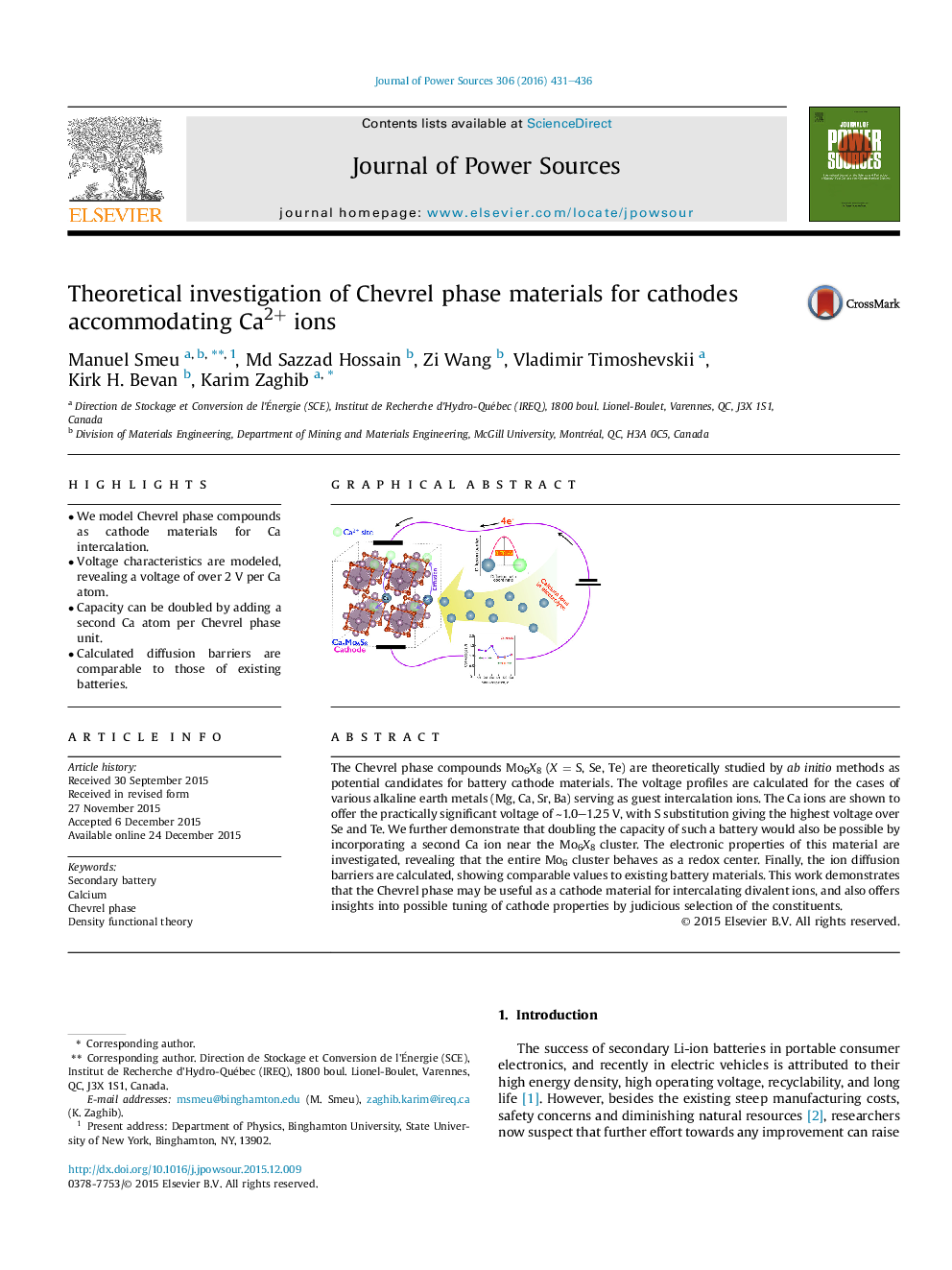| Article ID | Journal | Published Year | Pages | File Type |
|---|---|---|---|---|
| 1292381 | Journal of Power Sources | 2016 | 6 Pages |
•We model Chevrel phase compounds as cathode materials for Ca intercalation.•Voltage characteristics are modeled, revealing a voltage of over 2 V per Ca atom.•Capacity can be doubled by adding a second Ca atom per Chevrel phase unit.•Calculated diffusion barriers are comparable to those of existing batteries.
The Chevrel phase compounds Mo6X8 (X = S, Se, Te) are theoretically studied by ab initio methods as potential candidates for battery cathode materials. The voltage profiles are calculated for the cases of various alkaline earth metals (Mg, Ca, Sr, Ba) serving as guest intercalation ions. The Ca ions are shown to offer the practically significant voltage of ∼1.0–1.25 V, with S substitution giving the highest voltage over Se and Te. We further demonstrate that doubling the capacity of such a battery would also be possible by incorporating a second Ca ion near the Mo6X8 cluster. The electronic properties of this material are investigated, revealing that the entire Mo6 cluster behaves as a redox center. Finally, the ion diffusion barriers are calculated, showing comparable values to existing battery materials. This work demonstrates that the Chevrel phase may be useful as a cathode material for intercalating divalent ions, and also offers insights into possible tuning of cathode properties by judicious selection of the constituents.
Graphical abstractFigure optionsDownload full-size imageDownload as PowerPoint slide
